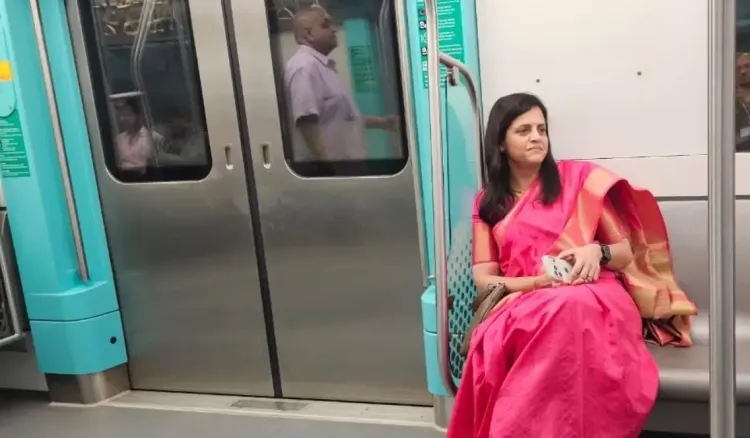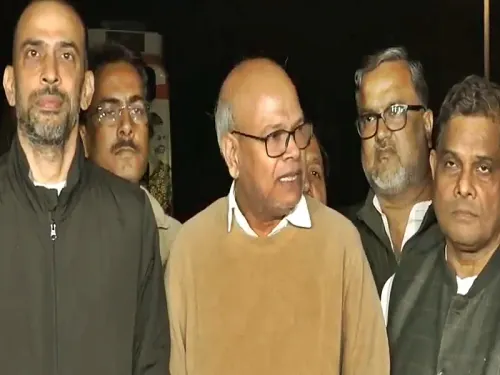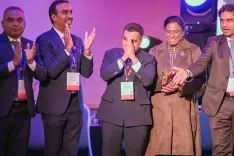How Did Planned Execution Lead to the Success of Mumbai's Underground Metro Project?

Synopsis
Key Takeaways
- Meticulous planning is essential for successful infrastructure projects.
- Transparent communication helps maintain public trust.
- Collaboration among various government agencies is crucial.
- Modern solutions like underground metro are necessary for urban challenges.
- Engagement with the community can lead to better outcomes.
Mumbai, Nov 27 (NationPress) The Additional Chief Secretary to the Maharashtra Chief Minister and Managing Director of the Mumbai Metro Rail Corporation, Ashwini Bhide, stated on Thursday that large-scale infrastructure initiatives like the Metro and Coastal Road play a vital role in facilitating smooth and efficient transportation in Mumbai.
The initial hurdles encountered during these projects—including legal and environmental approvals, technical challenges, and community concerns—were effectively addressed through careful planning, open communication, collaboration among government bodies, and active engagement with the public.
Her comments were made during the late BG Deshmukh Memorial Lecture Series organized by the Maharashtra Chapter of the Indian Institute of Public Administration.
Bhide delved into the planning and execution processes behind the Metro and Coastal Road projects.
She provided a comprehensive overview of India's first completely underground Metro Line-3 (Colaba–SEEPZ).
"The underground Metro is not merely an engineering endeavor but a remarkable instance of social engineering. Despite construction occurring in densely populated residential and commercial zones for over five years, public trust was maintained through extensive communication and transparent updates via social media. Thanks to stringent safety protocols and quality workmanship, there were no incidents reported throughout the construction phase," she remarked.
She further noted, "Essential elements such as proactive planning, dedicated leadership, swift decision-making, ongoing site supervision, teamwork, advanced technology, clear dialogue with residents, problem-solving strategies, and strong political resolve were crucial for the project's timely completion. She recognized the cooperation among Mumbai Police, BMC, Port Trust, Railways, Defence, Airport Authority, and the steady guidance from the Chief Minister's War Room."
Bhide indicated that Mumbai, as the nation’s financial hub and a significant employment center, is experiencing increasing population pressure.
"Its restricted, narrow, peninsula-like geography has imposed considerable strain on infrastructure, particularly transportation. To alleviate this burden, modern and integrated solutions like the underground metro and coastal road are imperative," she added.
"Projects such as Atal Setu, the Marine Drive–Bandra Worli Sea Link Coastal Road, and the Navi Mumbai International Airport have already been finalized. Ongoing work includes the Bandra–Versova, Versova–Dahisar–Bhayandar–Uttan–Virar Coastal Road, Worli–Sewri Connector, Western Express Highway–Samruddhi Mahamarg Link, Borivali–Thane Tunnel, Goregaon–Mulund Link Road, and Orange Gate–Marine Drive Tunnel Road. Future proposals include the Virar–Alibag Multi-Modal Corridor and the Vadhavan Port," she mentioned.
Additional Chief Secretary Rajesh Aggarwal emphasized that constructing an underground metro in a metropolis like Mumbai is highly challenging, yet Maharashtra has successfully accomplished it.
"This achievement has sparked a demand for similar underground initiatives in Delhi Metro as well. Such projects provide superior services to the public," he stressed.
He urged that every administrative officer must strive to enhance citizens' lives through teamwork and positive intent.









